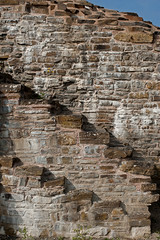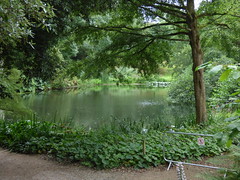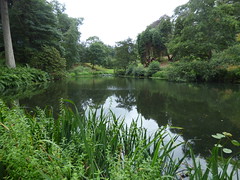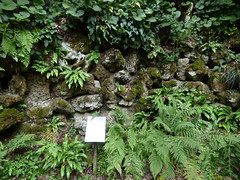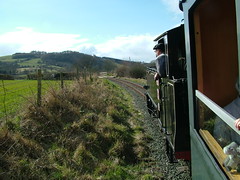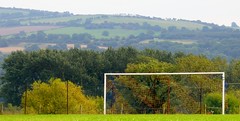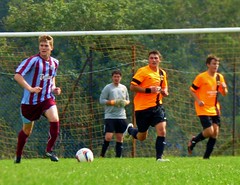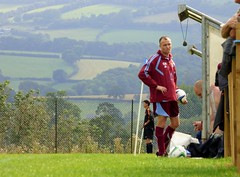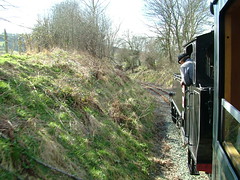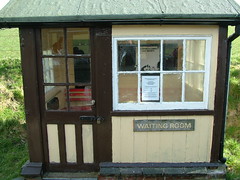Newtown
Newtown (Welsh: Y Drenewydd) is a town in Powys, Wales. It lies on the River Severn in the community of Newtown and Llanllwchaiarn, within the historic boundaries of Montgomeryshire. It was designated a new town in 1967 and saw population growth as firms settled, changing its market town character. Its 2001 population of 10,780 rose to 11,357 in the 2011 census, and rose again to 11,362 in the 2021 census.
Newtown was the birthplace of Robert Owen in 1771, whose house stood on the present site of the HSBC Bank. The town has a theatre, Theatr Hafren, and a public gallery, Oriel Davies, displaying contemporary arts and crafts. It is the largest town in Powys and Mid Wales.
Etymology
Both the English and Welsh names for the town mean "new town", the Welsh version with addition of the definite article.
History
At the end of the 13th century, Edward I commissioned Roger de Montgomerie to construct a centre for the hamlet of Llanfair-yng-Nghedewain. Being situated near a River Severn ford below the Long Bridge and close to the church of St Mary in Bettws Cedewain gave Newtown its original Welsh name.
The foundation is connected to the fate of Llywelyn ap Gruffudd, Prince of Wales, whose new administrative centre at Dolforwyn Castle near Abermule so alarmed Edward I that it was besieged. He seized Llywelyn's lands and granted them to the Mortimers. They transferred the administration of the cantref of Cedewain and the commote of Ceri from Dolforwyn Castle to the new settlement at Newtown.
The town grew in the 18th and 19th centuries around the textile and flannel industry, stimulated by completion of the Montgomeryshire Canal. In 1838, the town saw Wales's first Chartist demonstration.
The Cambrian Mills, opened in 1856, were the first steam-driven mills in Newtown. The mills stood beside the canal terminus on the east bank of the Severn. They expanded to become the largest of the Welsh woollen mills. However, by the end of the 19th century the Newtown mills were no longer competitive with those in the north of England. There was a disastrous fire in 1910 and another in 1912, after which the Cambrian Mills were not rebuilt. Thereafter Newtown was no longer an important centre of the woollen industry and many workers moved elsewhere. Newtown hosted the National Eisteddfod in 1965. In 1967, the town was designated a new town. It saw a large population growth as firms and people settled, changing its rural market town character.
Population
The population of Newtown in 2001 was 10,780, and increased to 11,347 in 2011. The census of 2021 recorded 11,362 people.
Governance
There are two tiers of local government covering Newtown, at community (town) and county level: Newtown and Llanllwchaiarn Town Council (often abbreviated to Newtown Town Council) and Powys County Council.
The two parishes of Newtown and Llanllwchaiarn were governed by a single local board from 1866. Such local boards became urban district councils under the Local Government Act 1894, and the Newtown and Llanllwchaiarn Urban District Council went on to govern the town from 1894 until 1974. In 1974 all urban districts were abolished under the Local Government Act 1972, with most of Newtown and Llanllwchaiarn Urban District Council's functions passing to Montgomeryshire District Council. At the same time a community was established covering the area of the former urban district, with its council taking the name Newtown and Llanllwchaiarn Town Council. Further local government reorganisation took place across Wales in 1996, when Montgomeryshire District Council was abolished and its functions passed to Powys County Council.
The Town Council has 16 elected members serving five-year terms, and employs a staff of about ten. It deals mainly with green spaces and public facilities, and as a representative voice for Newtown. The Council Chair or Mayor, elected by the councillors, has been Councillor John Byrne since May 2022.
The community is represented on Powys County Council by five county councillors, each representing a ward: Newtown Central, Newtown East, Newtown Llanllwchaiarn West, Newtown Llanllwchaiarn West and Newtown South.
Geography
Newtown lies about 8 miles (13 km) from the Wales-England border, in the narrow valley of the River Severn, which restricts development north and south of the town. It is surrounded by small villages, often referred to collectively as the Newtown area. The Newtown post town area, including the villages, has a population approaching 16,000. The villages include Aberhafesp, Adfa, Bettws Cedewain, Bwlch-y-ffridd, Cefn-gwyn, Dolfor, Glanmule, Kerry, Llanllwchaiarn, Llanwyddelan, Mochdre, New Mills, Pentre, Rhydlydan, Sarn and Tregynon.
Buildings and monuments
Built by Pryce Pryce-Jones, the Pryce Jones Royal Welsh Warehouse remains the tallest building in Newtown. The two towering structures housed the world's first mail order service depot.
Bear Lanes, the town's main shopping centre, has a Tudor-style entrance. The building was once a hotel, The Bear, which contributes to the centre's appearance today.
The Robert Owen Museum is on the ground floor of the council offices in Brisco House, Broad Street. A statue of Robert Owen was erected in 1956 in a park off Shortbridge Street and Gas Street. A replica of this was later erected in Manchester.
The Free Library building designed by the architect Frank Shayler of Shrewsbury was built in 1902. The Baptist Chapel, dating from 1881, is a fine example of nonconformist architecture from that period. The Back Lane drill hall was completed in 1897.
Theatres, museums and galleries
- Theatr Hafren – a 555-seat venue
- Powys Theatre – home of the Newtown Amateur Dramatic Society
- Robert Owen Museum
- Textile Museum
- W H Smith Museum (above the shop)
- Oriel Davies – largest visual arts venue in the region
International relations
Twin towns - sister cities
- Les Herbiers, Pays de la Loire, France
Notable people
- Robert Owen (1771–1858), social reformer and a founder of Utopian socialism and the Co-operative Movement
- John Bentley (1822–1894), member of the Wisconsin State Assembly
- James Trow (1826–1892), an Ontario businessman and politician
- Pryce Pryce-Jones (1834–1920), mail-order entrepreneur born at Llanllwchaiarn, nearby
- Air Commodore Ernest Norton, (1893–1966), RAF Officer and flying ace in WW1
- Geraint Goodwin (1903–1941), novelist and short story writer in English, born in Llanllwchaiarn, near Newtown
In popular culture
In the stop motion animated series Fireman Sam, the fictional town of Pontypandy is within driving distance to Newtown as the characters on the show often go on outings there, usually for shopping or the cinema, and often being driven there and back by Trevor Evans the bus driver. Firefighter Penny Morris originally lived in Newtown, but later moved to Pontypandy to serve alongside the firemen there.
External links
Looking for places related to Newtown?
Those are other destinations to find places related to Newtown:




